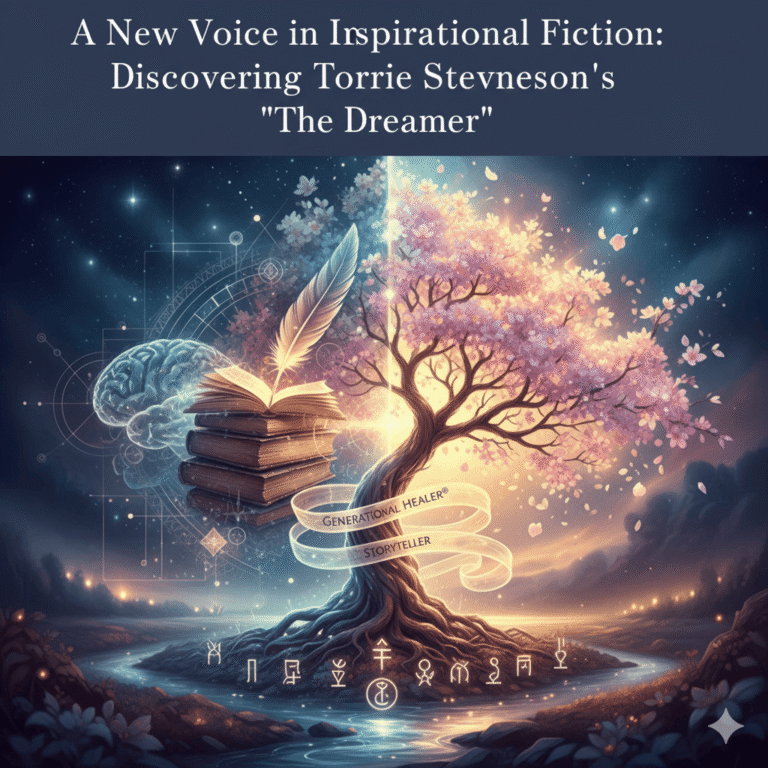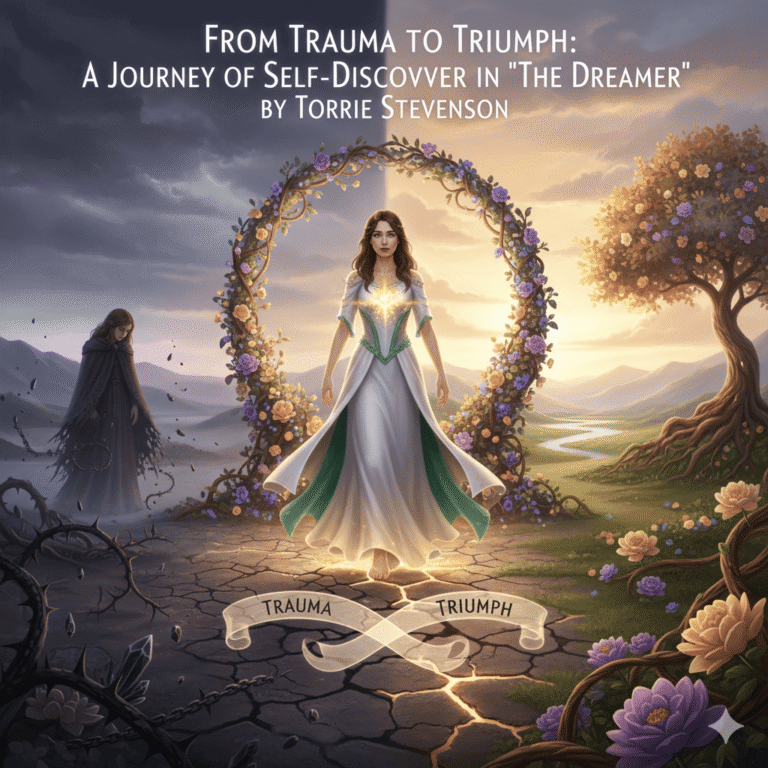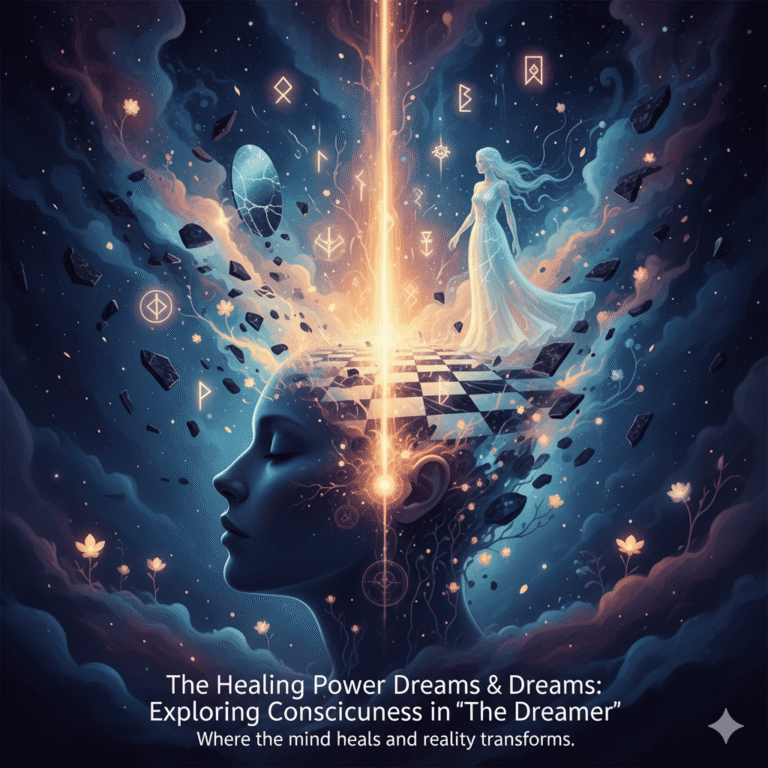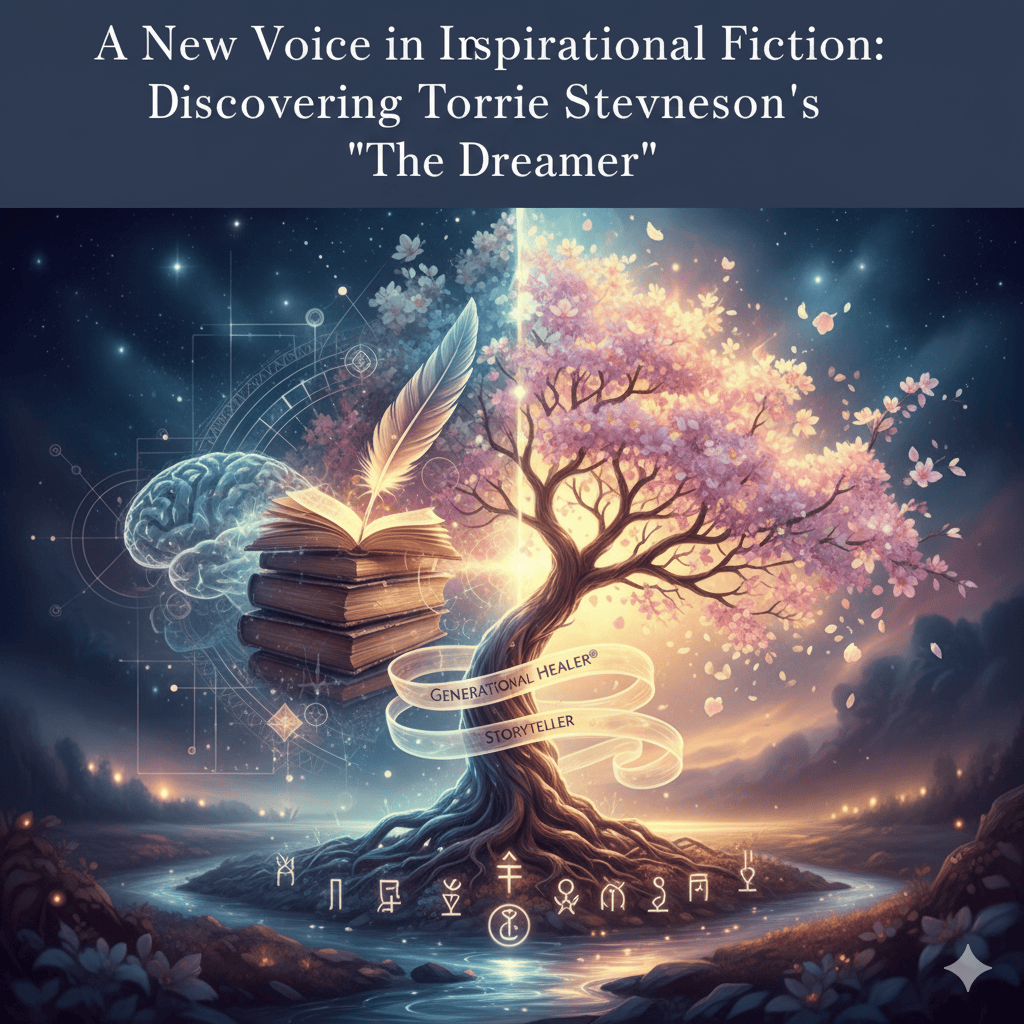The Psychology Behind Spiritual Awakening in The Dreamer by Torrie Stevenson
What happens when psychology meets spirituality? This fascinating intersection forms the heart of Torrie Stevenson’s debut novella, The Dreamer. With a doctorate in education, Stevenson brings a unique perspective to spiritual awakening fiction novels, exploring the age-old question of spiritual awakening and personal transformation.
Understanding Trauma’s Impact on Spiritual Growth
Dawn’s story in The Dreamer begins with trauma, a theme that runs deep throughout this
emotional healing story. From her childhood experiences of being teased and constantly moving to her teenage struggles with self-harm and suicidal thoughts, Dawn carries wounds that many readers will recognize in their own lives. This approach places the book firmly in the category of life-changing fiction stories that address real psychological struggles.
What makes Stevenson’s approach so compelling is how she weaves psychological
understanding with spiritual elements. Dawn’s journey isn’t just about having mystical dreams; it’s about how a broken person can find healing and purpose through unexpected channels. This reflects real-world therapeutic approaches that recognize the importance of meaning-making in recovery.
Research in psychology has long shown that people who experience trauma often go through periods of questioning their identity and purpose. Dawn’s desperate cry of “Who am I?” isn’t just a literary device; it’s a genuine psychological response to prolonged stress and emotional pain.
Dreams as Healing Mechanisms
The central dream sequence in The Dreamer serves as more than just mystical entertainment. From a psychological perspective, dreams often function as our mind’s way of processing
unresolved conflicts and emotions. Dawn’s elaborate dream, with its rich symbolism and mysterious figures, can be understood as her psyche attempting to heal itself.
The imagery Dawn encounters in her dream carries deep psychological significance. The white gown represents rebirth and new identity, while the mysterious woman on the throne symbolizes the integrated, whole self that Dawn is moving toward. The religious symbols suggest a search for something greater than herself, a common theme in recovery from trauma.
Stevenson’s academic background allows her to craft dream sequences that feel both mystical and psychologically sound. The dream doesn’t just happen to Dawn; it serves a specific function in her healing journey
The Role of Questions in Personal Growth
Throughout The Dreamer, questions drive the narrative forward. Dawn repeatedly asks, “Who am I?” while the mysterious voice responds that she will know “in time.” This exchange reflects a fundamental principle in therapeutic work: healing happens on its own timeline and cannot be rushed.
In psychology, we understand that asking the right questions is often more important than
having immediate answers. Dawn’s persistence in seeking her identity, despite being told to wait, shows healthy psychological curiosity and a refusal to remain stuck in old patterns.
The book demonstrates how powerful questions can be in triggering personal transformation. Sometimes we need to live in the uncertainty of not knowing while remaining open to discovery. This process requires both courage and patience, qualities that Dawn develops throughout her journey.
Generational Healing® and Breaking Cycles
One of the most intriguing aspects of Stevenson’s background as a certified Generational Healer® is her professional training in Generational Healing®. This perspective appears subtly throughout this transformation inspirational fiction book as we see Dawn struggling with patterns that likely extend beyond her individual experience.
Dawn’s attraction to “broken” people and unhealthy relationships suggests generational patterns of dysfunction. Her family’s constant moving and financial struggles hint at deeper systemic issues that have affected her development. The book suggests that true healing requires looking beyond individual symptoms to understand larger patterns.
This approach aligns with current understanding in family therapy and trauma work, which recognizes that individual problems often reflect larger family or cultural dynamics. Dawn’s spiritual awakening becomes a way of breaking free from these inherited patterns.
The Integration of Mind, Body, and Spirit
Stevenson’s holistic approach to healing shines through in how Dawn’s transformation unfolds. The vivid physical sensations she experiences during her dream, the emotional intensity of her awakening, and the spiritual implications of her visions all work together to create a complete healing experience.
This integration reflects modern therapeutic approaches that recognize humans as complex beings requiring attention to multiple dimensions of experience. Dawn’s healing isn’t just psychological or just spiritual; it’s a complete reorganization of her sense of self.
The author’s work with at-risk youth likely informs this understanding. Young people dealing with trauma often benefit from approaches that address their whole being rather than just their symptoms.
Mystical Experiences and Mental Health
One of the most sensitive aspects of The Dreamer is how Stevenson handles the relationship
between mystical experiences and mental health. Dawn’s extraordinary dream could easily be dismissed as psychological symptoms rather than a genuine spiritual experience.
However, Stevenson’s professional background allows her to navigate this territory with skill. She presents Dawn’s experience as valid and meaningful without ignoring the psychological context. This balanced approach helps readers understand that spiritual experiences and
psychological healing can coexist and support each other.
Research in the psychology of religion shows that mystical experiences can indeed be healing when they occur within a framework of support and understanding. Dawn’s experience fits this pattern, suggesting growth rather than psychosis.
The Therapeutic Value of Story
The Dreamer itself functions as a form of therapy for readers. As one of the notable women’s
inspirational fiction works, this motivational fiction novella allows readers to explore their own questions about identity and purpose in a safe, fictional context. The book provides a language for discussing spiritual experiences that might otherwise seem too personal or strange to share.
Stevenson’s academic training likely influenced her understanding of how stories can heal. Narrative therapy recognizes that the stories we tell about ourselves shape our reality. By offering Dawn’s story, the author provides readers with new possibilities for understanding their own lives.
Looking Forward to The Hidden
The announcement that The Hidden will continue Dawn’s story suggests that Stevenson
understands healing as an ongoing process rather than a single event. This realistic approach reflects professional understanding that personal growth happens in stages over time.
As readers await the second book in the series, they can appreciate how The Dreamer
establishes themes that will likely deepen and develop. Dawn’s initial awakening is just the beginning of what promises to be a rich exploration of psychology, spirituality, and human potential.
A New Voice in Transformational Literature
As one of the emerging inspirational women authors 2025, Torrie Stevenson’s unique combination of professional expertise and creative storytelling makes The Dreamer a standout in the field of transformational literature. Her ability to ground mystical experiences in psychological reality creates a story that feels both magical and believable. This Torrie Stevenson author brings credibility to the genre of life changing inspirational fiction.
For readers seeking books that take spiritual experiences seriously while remaining
psychologically sound, The Dreamer offers exactly what they’re looking for. It’s a story that
honors both the mystery of human consciousness and the practical realities of healing and
growth.




